How to Break a Lock with a Hammer (3 Methods)
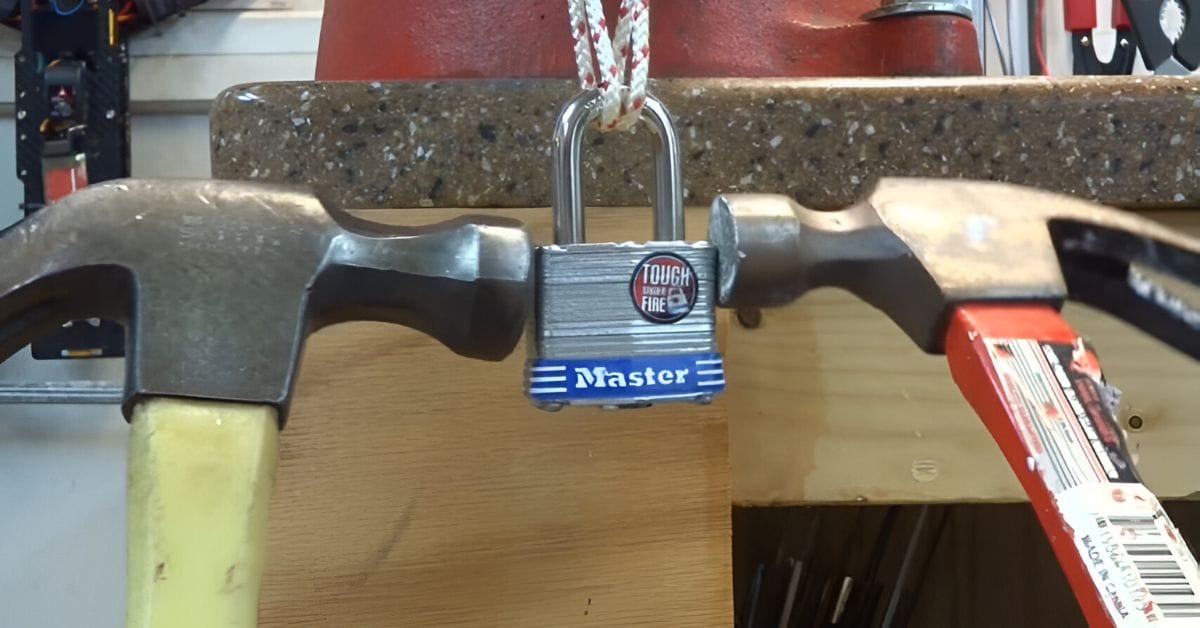
You may need to use a hammer if you’ve lost or misplaced your lock key and don’t know how to break in.
I’ve used this method as a handyman and will teach you how to do the same safely in this guide. You might even be able to reuse the lock if all goes well. Applying the right amount of force when tapping can render the lock reusable by minimizing the damage to the pins underneath the lock’s body.
In general, you need to follow these steps to break a lock with a hammer:
- Fetch a bump, mallet, or a ball-peen hammer.
- Put on your safety gear and gloves.
- Pull the hammer shackle by inserting your fingers while avoiding the lock’s body.
- Insert a bump key if it’s a mounted or cam lock.
- Tap the lock’s side (or bump key) repeatedly with a hammer to disengage the pins underneath.
- Keep tapping the lock until it opens.
My guide below will cover the procedure in more detail for 3 scenarios. Let’s begin.
Breaking a Lock with a Hammer (3 Methods)
We will focus on 3 methods to show how to use a (non-regular) hammer to break 2 types of locks: a padlock, when detached and attached, and a mounted or cam lock.
However, you can use tools like wrenches and screwdrivers for the same purpose. Follow the steps below to break a lock with a hammer without fuss.
The Things You’ll Need
You will need the following 3 items:
- A bump hammer, mallet, or ball peen hammer (not a regular type)
- Safety gloves
A Non-Regular Hammer
You have 3 options for using a hammer, which must not be a regular one to minimize damaging the lock:
- A bump hammer is designed to bump a lock. It is made of a high-density polymer with a rubber handle. It enforces proportional pressure on the lock and exerts a sharp impact, which is key to ramping it. If you can’t find a bump hammer, use a mallet instead.
- A mallet is a special hammer with a soft head that pounds objects lightly without inflicting undesirable damage. Mallets ensure an easier and more strategic aim when striking a lock. Mallet hammers are made of wood, rubber, soft metals, plastic, or rawhide.
- Use a ball-peen hammer if you can’t access a mallet or bump hammer. It has two hammerheads: a regular-shaped one and a round hammerhead. Use a size appropriate for the size of your lock. A size 4 ball-peen hammer is usually right for a small lock.

Other Requirements
You will need a bump key and a rebound ring for the 3rd method to open a mounted or cam lock.
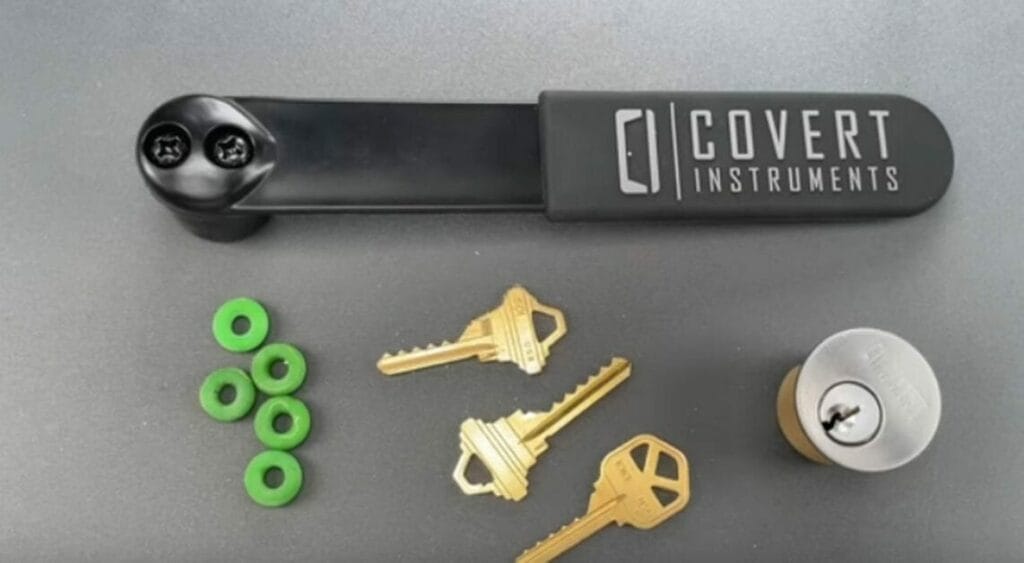
Safety Gloves
Wear safety gloves with thick fabric (or hammer-proof gloves) to protect your hand from stray hammering.
They are reinforced with a thermoplastic layer that sucks up the pressure of a stray hammering. But be extra cautious because only the fingers are safe; the palm is still vulnerable.
A variety of hammer-proof gloves are available, including leather and Kevlar gloves. I prefer leather gloves to Kevlar because they provide a firmer grip. However, Kevlar gloves are thicker and can thwart abrasions and cuts. Importantly, ensure your hands fit inside the gloves.
Using a Hammer to Break a Detached Padlock (2 Steps)
Use this method if the padlock is not attached to anything, and you can hold it easily in one hand.
Step 1: Hold the Lock
Hold the detached padlock in one hand and the hammer in the other, as shown below.
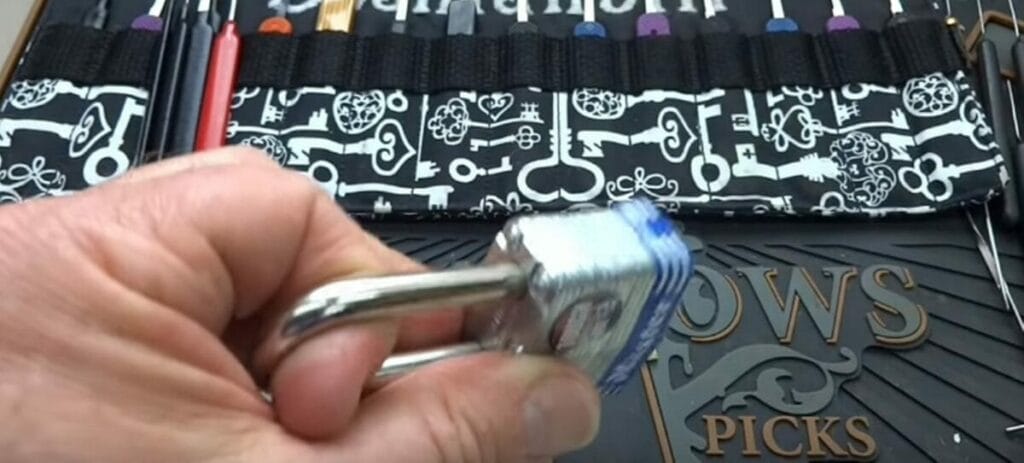
Step 2: Tap Lightly
Tap rapidly but lightly on one side of the lock with the hammer.
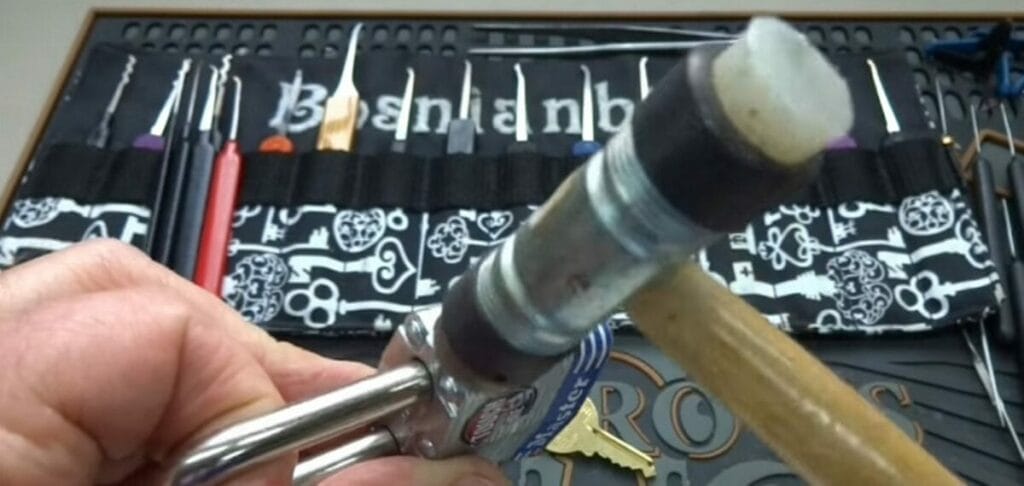
The lock should open after a few taps.
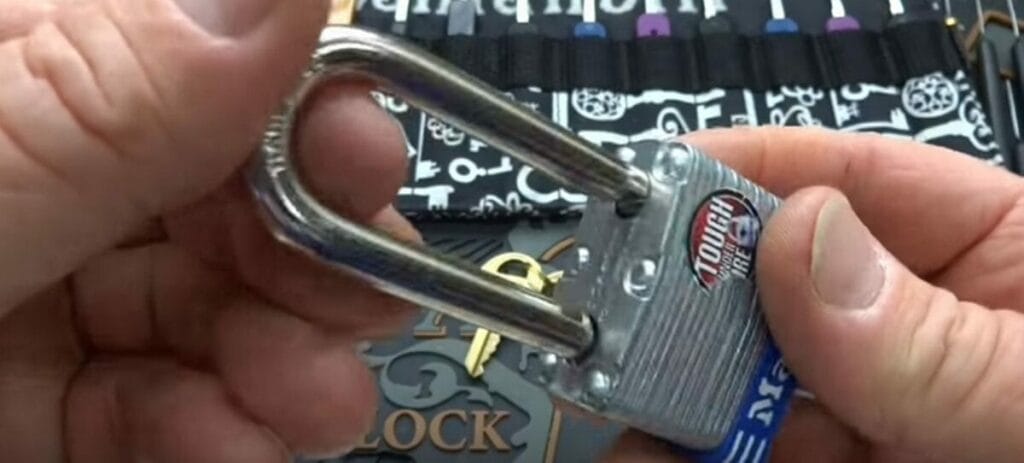
Using a Hammer to Break an Attached Padlock (3 Steps)
Use this method if the padlock is attached to something.
Step 1: Preparations
Gather the necessary tools for the task — a hammer and safety gear.
If not careful, you could sustain two potential injuries in this activity: the impact of the flying objects on your eyes and that of a stray hammer on your hand. So, have your safety gear on before proceeding.
Step 2: Pull Up the Lock’s Shackle With a Hammer
Insert any two fingers you’re comfortable with into the shackle loop and force the shackle from the top of the lock. The locking pins (inside the lock) align themselves well, making the crack job easier.
Alternatively, you can place a crowbar on top of the lock and unleash brute force on the crowbar with a hammer until the lock flings open. Eliminate all slack or leeway in the shackle. Otherwise, the lock won’t break easily, no matter how strongly you knock it. Avoid grabbing the lock’s body section to get a space for the hammer.
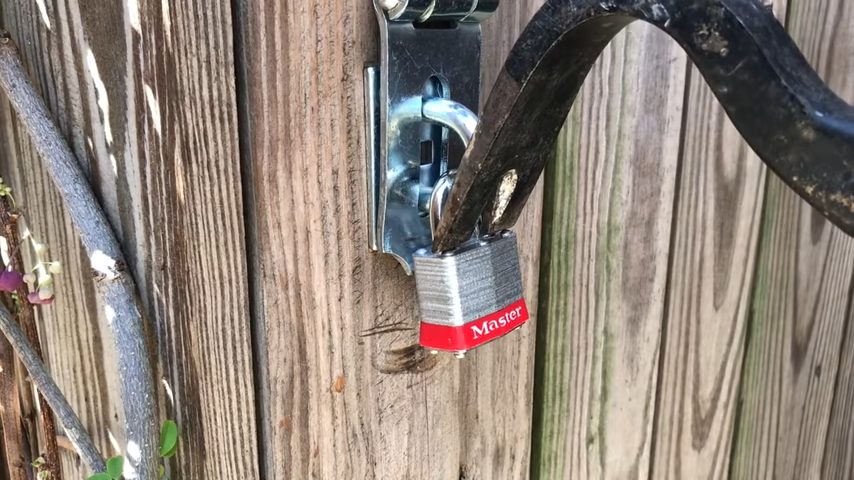
Step 3: Tap the Lock’s Side Repeatedly
Now, target the fixed end of the shackle’s side, where the pin is on the inside.
Pound the lock multiple times with quick and short strikes. This action disengages enough pins to bump the lock open.
Resist the temptation to swing for the fences. The pins must constantly move or disengage to override the lock, not brute pressure. Teeing up can only harm you.
Using a Hammer to Break a Mounted or Cam Lock (3 Steps)
Use this method if the lock is a mounted or cam-type, whether attached or not.
Step 1: Insert a Lockpicker or Bump Key
Insert a lockpicker or bump key into the key slot.
Then, put a rubber rebound ring over it, shown in green in the picture below. It will help in striking the lock’s face and bump it quickly.
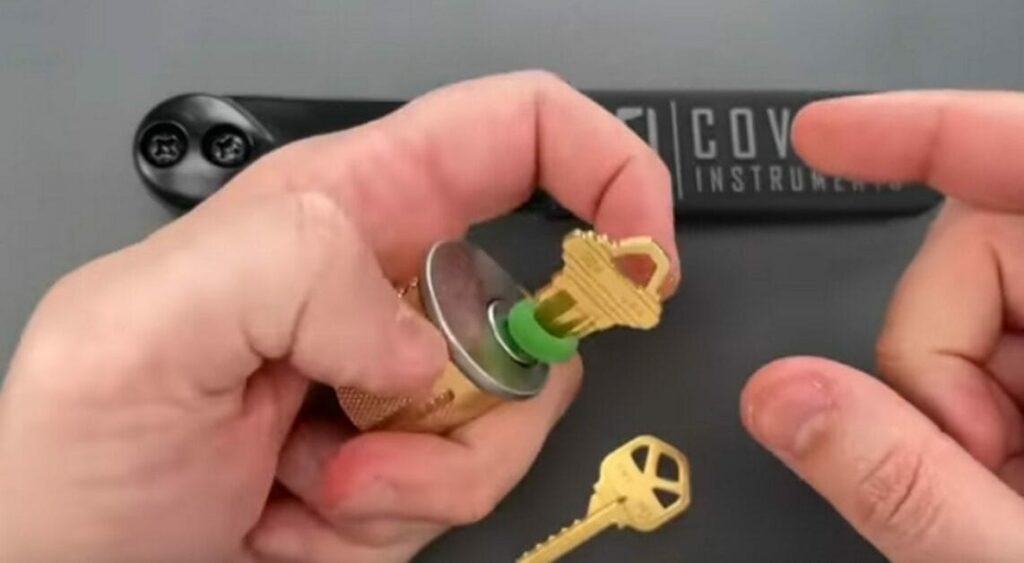
Step 2: Use a Small Tension Wrench
Put a small tension wrench in the key’s bow.
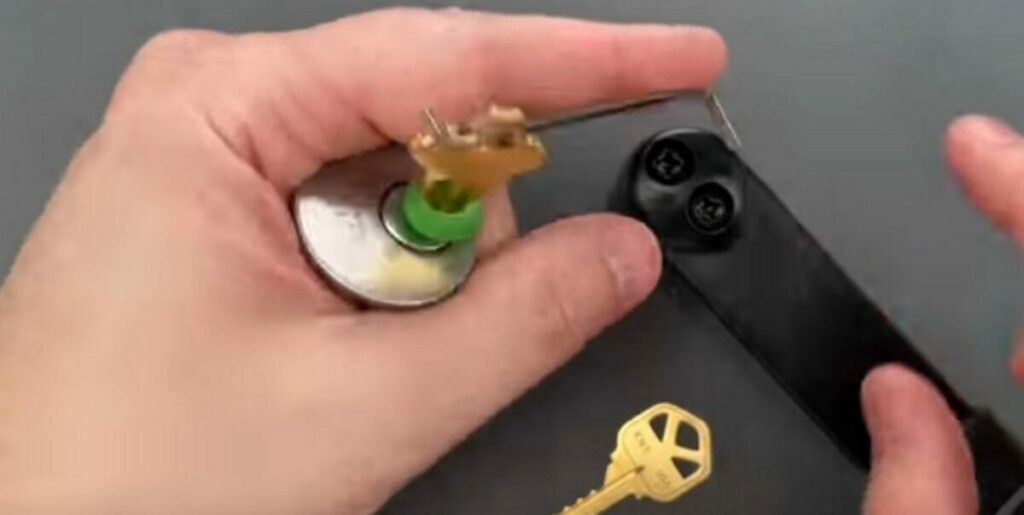
Step 3: Tap Lightly
Tap lightly with a bump or other non-regular hammer.
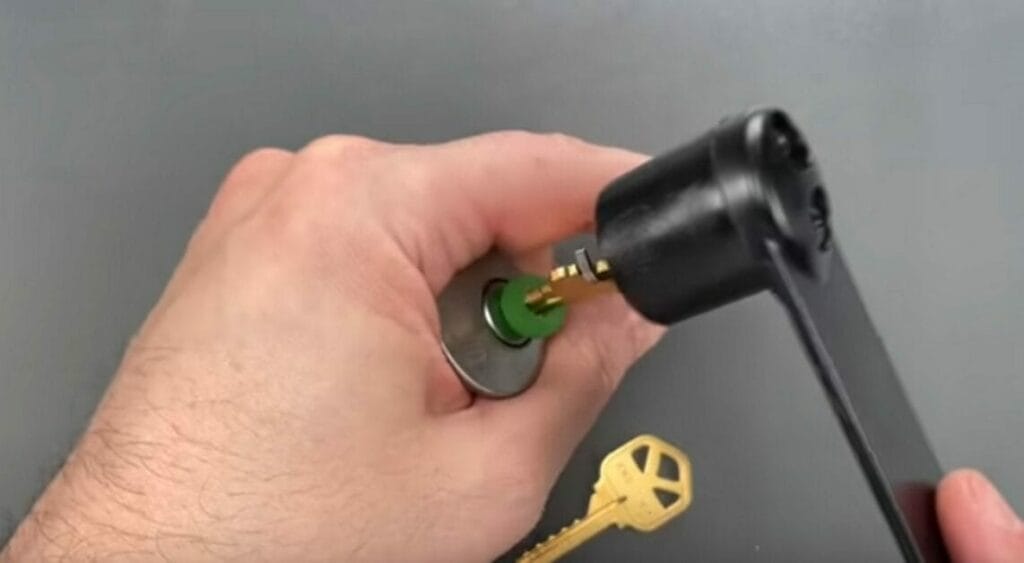
Keep tapping until the lock opens.
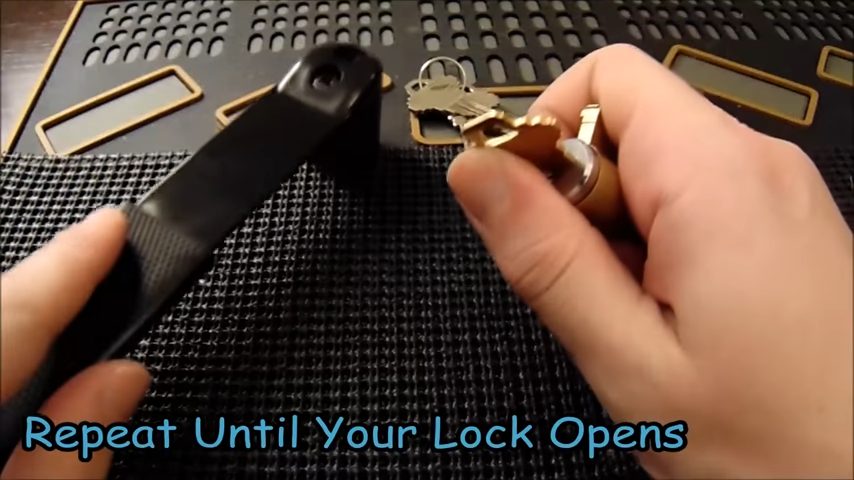
Repurposing a Forcefully-Opened Lock
Depending on the lock’s condition after forcefully opening it, you can repurpose or reuse it.
You can reuse the lock if it is still usable — if the pins inside the lock are still intact; however, fasten it well first. Otherwise, discard it in a scrap collection for a few dollars.
References
Website Resources:
- brute force. https://www.fortinet.com/resources/cyberglossary/brute-force-attack
- dollars. https://www.investopedia.com/terms/forex/u/usd-united-states-dollar.asp
- Ball peen hammer. https://deadontools.com/products/32-oz-smooth-face-ball-peen-hammer
- Bump hammer. https://www.sparrowslockpicks.com/products/bump-hammer
- Mallet Hammer. https://www.daraz.pk/products/stanley-rubber-mallet-hammer-450gm-i208740657.html
Video References:
BosnianBill
HelpfulLockPicker
LockPickingLawyer
